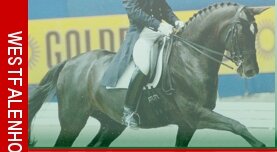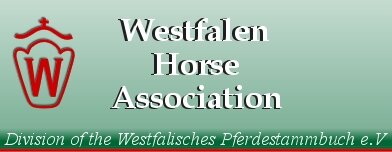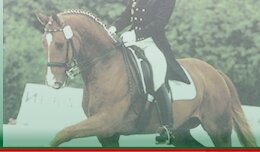


 |
 |
 |
|||
|
Westfälisches
|
Landing and Turn: Throughness, Outside Aids, and TrackWhen you focus on landing and turning, you’ll notice how much throughness, outside aids, and a precise track matter. These elements connect your aids directly to your horse’s balance and response, but mastering them isn’t just about giving commands. It’s about refining communication in those crucial moments after a jump or during a tight turn. If you want to see how each detail can improve your ride’s clarity and safety, there’s more to consider. Understanding Throughness in Landing and TurningThroughness is a crucial concept in equestrianism, referring to the uninterrupted connection between a horse's hind legs and the bridle during maneuvers such as landing and turning. To achieve and maintain this connection, it's important to consider the flow of energy through the horse's body. When executing a left turn, it's essential that the outside aids are applied with sensitivity, ensuring they guide the horse without creating any restrictions in the connection. The rider's position is also significant; maintaining a centered and balanced posture is imperative. Leaning toward the inside of the turn can result in an imbalance, which may compromise the horse’s alignment and overall stability. Imbalance during landing can negatively impact throughness, leading to turns that feel disconnected and awkward. To enhance throughness, it's beneficial to practice turns while focusing on the appropriate application of outside aids. This practice not only reinforces the horse’s reliance on these aids but also supports its flexibility, balance, and responsiveness. Proper execution of turns and landings contributes to overall performance and effectiveness in equestrian disciplines. The Importance of Outside Aids in Equestrian TurnsThe effective use of outside aids is crucial in equestrian riding, especially during turns. While it may be instinctive to rely on the inside rein, proper technique emphasizes the importance of the outside rein and leg. These aids play a significant role in guiding the horse through a turn, facilitating balance and ensuring an efficient movement. When a rider leans inward or excessively uses the inside rein, it can lead to a loss of engagement in the horse's hind legs, which negatively affects turning precision. Maintaining an upright position is essential, as this allows the rider to provide aids that support correct movement without compromising the horse's balance. Achieving Straightness and Connection Through Proper TrackStraightness is a fundamental aspect of effective riding that involves guiding the horse along a precise track. To achieve straightness, it's essential to align the horse’s shoulders and body with the chosen path, be it a straight line or a curve. Utilizing outside aids—particularly the outside rein and leg aids—plays a crucial role in maintaining connection and balance, especially during turns. This connection aids in keeping the horse organized throughout the movement. Practicing transitions between turns and straight lines enhances the horse’s straightness and connection, which are vital for promoting true throughness in the horse. A rider's consistent focus on applying the correct aids is instrumental in helping the horse comprehend the track, enabling it to move with increased freedom and engagement. Proper alignment and the effective use of aids not only contribute to the horse's physical performance but also to the overall harmony between horse and rider during various movements. Rider Position and Its Effect on Horse BalanceMaintaining a straight and centered posture in the saddle is important for enabling a horse to remain balanced throughout various movements. A proper rider position should create a direct line from the bit to the rider's elbow, which facilitates clear communication between horse and rider. It's advisable to distribute weight evenly in the stirrups to help preserve the horse's balance and alignment, particularly when utilizing outside aids during turns. Visualizing an upward extension of the spine can aid in maintaining this alignment. An unbalanced rider position can negatively impact a horse's straightness, potentially leading to misalignment. Achieving and maintaining a proper rider position is essential for enhancing a horse's responsiveness, engagement, and overall performance, thereby promoting effective interaction between horse and rider. Reinforcement of Aids: Outside Rein and Leg in ActionMastering steering techniques in horseback riding relies heavily on the appropriate use of outside aids, specifically the outside rein and leg. These aids are crucial for achieving effective turns and maintaining the horse’s balance. The outside rein helps guide the horse's shoulders, facilitating better alignment and stability during the turn. Meanwhile, the outside leg assists in promoting forward movement and ensuring straightness, which are essential for a successful transition through turns. It is important to note that reliance on the inside rein alone can lead to miscommunication between the rider and horse. Therefore, a coordinated approach that includes all aids—inside and outside reins and legs—enhances clarity in communication, leading to increased responsiveness from the horse. Moreover, the rider's body position plays a critical role in the effectiveness of these aids. Maintaining a centered posture is necessary; any lean towards the inside can compromise the aids' effectiveness and negatively impact the horse's balance, leading to less efficient movement. Consistent reinforcement of these techniques is essential for developing a deeper engagement and connection with the horse. This foundational work is necessary for progressing to more advanced riding maneuvers, highlighting the importance of proper aid usage in equestrian training. Exercises for Developing Responsiveness and EngagementTo enhance a horse's responsiveness and engagement, it's important to employ exercises that build on a solid comprehension of outside rein and leg aids. One effective exercise is practicing square turns, which aids in helping the horse evaluate each landing while maintaining balance. This exercise encourages proper bending and connection to the outside aids. Additionally, incorporating guide poles following jumps can be beneficial for reinforcing straightness and promoting the horse's attentiveness during turns. Attention to transitions from jumping to turning is crucial; riders should seek prompt responses to their aids to maintain rhythm and engagement throughout the exercise. Monitoring the horse's body alignment is essential to ensure that responses to aids contribute to improved overall coordination and movement quality. Overcoming Common Issues: Drift, Crookedness, and PolesCommon issues encountered in equestrian activities, such as drift, crookedness, and knocking poles, can impede performance during jumps and turns. These challenges can be effectively addressed through specific strategies aimed at improving overall horse and rider coordination. To mitigate drift, maintaining straightness prior to executing a turn is essential. Transitioning to a canter can be beneficial, as it may enhance the horse's balance and readiness for a turn. This adjustment can facilitate a more controlled approach to directional changes. Crookedness can typically be corrected by focusing on the alignment of the horse's legs. Subtle, discreet aids can be employed to guide the horse into a straighter position, thereby promoting better balance throughout the ride. Employing outside aids—particularly the outside rein and leg—can provide additional control during turns. This engagement helps maintain the horse's straightness and balance, contributing positively to performance. Incorporating square turns and halting before a turn may improve the horse's balance and provide the rider with time to assess the situation. These practices can significantly reduce the likelihood of knocking poles during jumping exercises and enhance the overall effectiveness of the riding experience. Step-by-Step Drills for Effective Transitions and TurnsBefore engaging in more complex jumping courses, it's important to develop a systematic approach to achieve smooth transitions and accurate turns. Begin by establishing consistent forward momentum and rhythm in canter, which are essential for maintaining the horse’s balance. Practice transitions along straight lines, focusing on maintaining straightness and ensuring the horse is responsive to aids. It's advisable to utilize outside aids—specifically the outside rein and leg—to encourage the horse to engage its hindquarters. This method aids in facilitating smooth turns without an excessive reliance on the inside rein. Maintaining a centered position is crucial; leaning inward can diminish the effectiveness of your aids. To enhance timing and accuracy during these exercises, consider placing visual markers within the arena. This practice can help improve the precision of both transitions and turns. Monitoring and Adjusting for Individual Horse NeedsMonitoring the individual development of a horse is vital for effective training. Each horse has its own pace of learning and adaptation, which necessitates careful observation of their response to aids during various movements, such as transitions and turns. It's important to assess the horse's aptitude and responsiveness, paying attention to signs of imbalance or tension, particularly when applying outside aids in turns. Adjusting training techniques based on the horse’s ability to maintain balance, engagement, and straightness is essential. Consistent use of outside rein and leg aids can provide insight into the horse’s comfort and readiness to perform. Regular assessments through specific exercises, such as shoulder-in, can help trainers make necessary adjustments to enhance the horse’s throughness while honoring its individual needs and development. This tailored approach allows for more effective training and an improved overall performance. Leveraging Throughness for Enhanced Performance and SafetyWhen a horse achieves a state of true throughness, it allows for effective communication between the rider and the horse through the aids employed. This state is characterized by the seamless transmission of signals throughout the horse's body, which can enhance performance and safety. Utilizing outside aids, such as the outside rein and leg, plays a critical role in maintaining the horse's balance and straightness during maneuvers, especially when landing after jumps. Focusing on guiding the horse's legs effectively during turns can lead to improved overall performance. Additionally, this focus can contribute to a safer execution of transitions by minimizing the risk of miscommunication or errors. Reducing reliance on the inside rein in favor of outside aids helps maintain the horse's engagement and rhythm, which are essential for controlled responses. Furthermore, achieving proper throughness equips the horse to navigate turns post-jump more effectively, thereby decreasing the likelihood of mistakes and supporting the rider's objectives in competitive settings. This balanced approach is fundamental to optimizing performance while prioritizing safety. ConclusionWhen you master throughness, use your outside aids with precision, and keep your horse on a true track, you’ll find your landings and turns becoming consistently smooth and controlled. Remember, your position and clear communication build trust and balance, while proactive adjustments help you handle any challenge. By reinforcing your aids and staying attentive to your horse’s needs, you’re setting the stage for safer, more effective rides and a stronger partnership every time you’re in the saddle. |